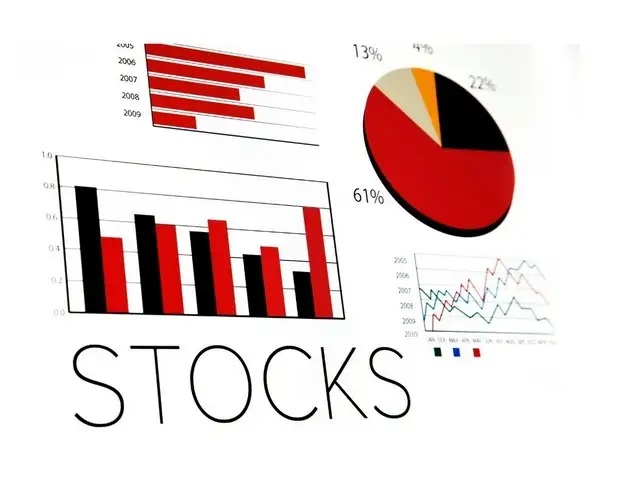Telemedicine Veterinary is a process where a veterinarian gives medical advice and treatment to animals through telecommunication. The animal can be located anywhere in the world, as long as it has internet access.
Telemedicine Veterinary is an emerging industry that has been around for a few decades. It was first used on humans and then started to gain popularity with veterinary care in the late 1990s.
Telemedicine Veterinary is a branch of telemedicine that involves the use of telecommunications technology for veterinary care. This can involve using telephones or computers for consultations and treatment. It also includes remote diagnostics and monitoring technologies to help veterinarians provide care from afar.
Telehealth for Your Pet
Telehealth for pets is a newer concept in the healthcare industry. It is becoming more and more popular as a way to provide better care for our furry friends.
Telehealth for Pets is a relatively new concept in the healthcare industry. It is becoming more and more popular as a way to provide better care for our furry friends. This service provides veterinary doctors with the ability to diagnose and treat your pet remotely, through phone calls, text messages, or video chats.

Benefits of using Telemedicine to Treat Your Pet
Telemedicine is a way to connect with your vet, who is located remotely, via phone or video. This can be a great way to keep your pet healthy and happy.
Telemedicine is not just for humans anymore. It can help animals too. The benefits of using this service are that it allows you to get the care you need when you need it without having to travel or spend a lot of money on treatment.
It also allows you to stay in touch with your pet while they are away from home and reduces the risk of separation anxiety and behavioral problems caused by being away from their family members for long periods of time.
Some of the benefits include:
Disadvantages of telemedicine veterinary
There are some disadvantages of using telemedicine veterinary. One of them is that this system does not provide the same level of care that humans can provide in person. Another disadvantage is that all information provided through this system must be trusted as it is sent over the internet, which means there are no medical records, x-rays, or even physical examinations in these cases.
A Short History of Online Veterinary Services
Veterinary services have been around for a long time. However, the advent of the internet has given rise to new opportunities for vets and their patients.
The first online vet was started in 1997 by Dr. John W.W. Adams, an Australian veterinarian. He started a website called Veterinary Online Services that offered consultations with vets remotely through email and phone calls.
This online service was followed by other vet-specific websites such as PetNet, which offered pet health advice and pet care information to owners who were unable to take their pets to the vet. These websites helped people find a vet in their area that could offer them help with their animal’s medical needs or answer questions about animal care without actually visiting the vet clinic or veterinary hospital themselves.
What should I know about veterinary specialists?
Veterinarians are the specialists who take care of animals. They are responsible for diagnosing, preventing, and treating diseases that affect animals.
Veterinary specialists have a wide range of responsibilities. They can be involved in research and development of new products, they can also conduct clinical trials on new drug therapies, and they can work with the government to make sure that animal welfare is being taken care of.
Veterinary specialists work in both private practice and veterinary hospitals. They may also work in research laboratories or at zoos or other facilities that care for animals.
What are veterinary telemedicine services?
Veterinary telemedicine services provide an opportunity for veterinarians and other animal professionals to conduct remote consultations, exams, and procedures with patients.
Veterinary telemedicine has been used for decades in human medicine. It is now being adopted by the veterinary industry in order to improve the quality of care that pets receive.
Telemedicine services are offered by veterinary clinics as well as private companies. Veterinary clinics offer services such as online consultations or remote surgery and diagnostic tests. Private companies offer more complex services such as remote x-ray, ultrasound, or laboratory tests.
What types of software are used in a telemedicine veterinary practice?
Telemedicine is a form of healthcare that allows patients to be treated remotely by doctors. It has been used in veterinary practice for years.
The software used in a telemedicine veterinary practice includes software for patient records, scheduling, and billing. In addition, it may include software that is used to record patient care and treatment, such as medical imaging or laboratory testing.
What are the leading echnologies that can be used in a telemedicine veterinary practice?
In the US, telemedicine is estimated to have a market size of $6 billion in 2018. In Europe, it is expected to grow from €1.9 billion in 2017 to €8.2 billion by 2022. The primary drivers of this growth are increasing demand for high-quality healthcare services, growing adoption of online healthcare services, and increasing awareness of telemedicine as a cost-effective alternative for patients with chronic diseases who cannot travel long distances or afford travel costs.
Telemedicine has been used in veterinary practice since the 1980s but only recently has it gained more attention and popularity due to technological advancements such as mobile apps and cloud computing that enable veterinarians to work
How can I avoid or minimize my pet’s pain during a visit to the Vet and what things should I keep in mind before my first visit?
One of the most difficult parts of making an appointment with a veterinarian is getting your pet to cooperate in the first place. We have compiled a list of tricks that will help you prepare your pet for their visit without any tension.
How Telemedicine is Disrupting the Veterinary Industry
Telemedicine is a type of healthcare in which patients can receive care from a doctor or other healthcare worker using live video and audio communication. This type of care is typically managed by telehealth providers.
Telemedicine has the potential to disrupt the veterinary industry in many ways. It can reduce costs, increase productivity, and improve access to care for animals. But it is not without its challenges, including the need for more training for veterinarians and technicians, as well as a lack of research on how best to use telemedicine technology.
The veterinary telemedicine market is growing rapidly with an estimated $3 billion projected by 2020. The use cases are varied and include remote diagnosis, remote surgery and even remote training sessions with students or new hires at a vet hospital.
How do veterinary telemedicine services work?
Veterinary telemedicine services are a new way of providing health care to animals. It is a way for veterinarians to provide care for animals through video chat, phone calls, and other methods.
The first use of veterinary telemedicine was in the late 1980s. At that time, it was only used in emergency situations where animal care providers were not available. Nowadays, it is used more often and can be found in most veterinary clinics across the country.
How does telemedicine work in the veterinary field?
Telemedicine has been used for decades in the human healthcare field. Now it is becoming more popular in veterinary medicine as well. In Europe, telemedicine has been around since 2008 when it was implemented by a private company called TeleVet.
The use of telemedicine in veterinary medicine is growing rapidly because of the many benefits that it provides to both patients and veterinarians. For example, using telemedicine allows veterinarians to work from home or travel without sacrificing patient care or having to hire additional staff members.
How can an animal be involved in a telemedicine session?
Telemedicine sessions with animals have been around for a while. As technology advances, the use of animals in telemedicine sessions is becoming more and more common.
The use of animals in telemedicine sessions is growing, but there are still some barriers to overcome. One of the main challenges is the lack of equipment that can accommodate the needs of both humans and animals.
Telemedicine session with an animal can be done through live streaming or recorded video. The benefits are that it allows for better patient care and lessens the burden on healthcare providers.
How is a doctor able to access a patient remotely while they are at work?
Medical professionals can now use a remote patient monitoring system to access patients while they are at work.
The remote patient monitoring system allows the doctor to monitor patients remotely and provide care as needed. They are able to do this with the help of a video-conferencing system that allows them to be in two places at once. This saves time for both the doctor and the patient, which is especially helpful for urgent cases that need immediate treatment.
Doctors can also use this technology in emergency situations, such as during natural disasters or accidents, when it is difficult for them to get to their patients quickly.


